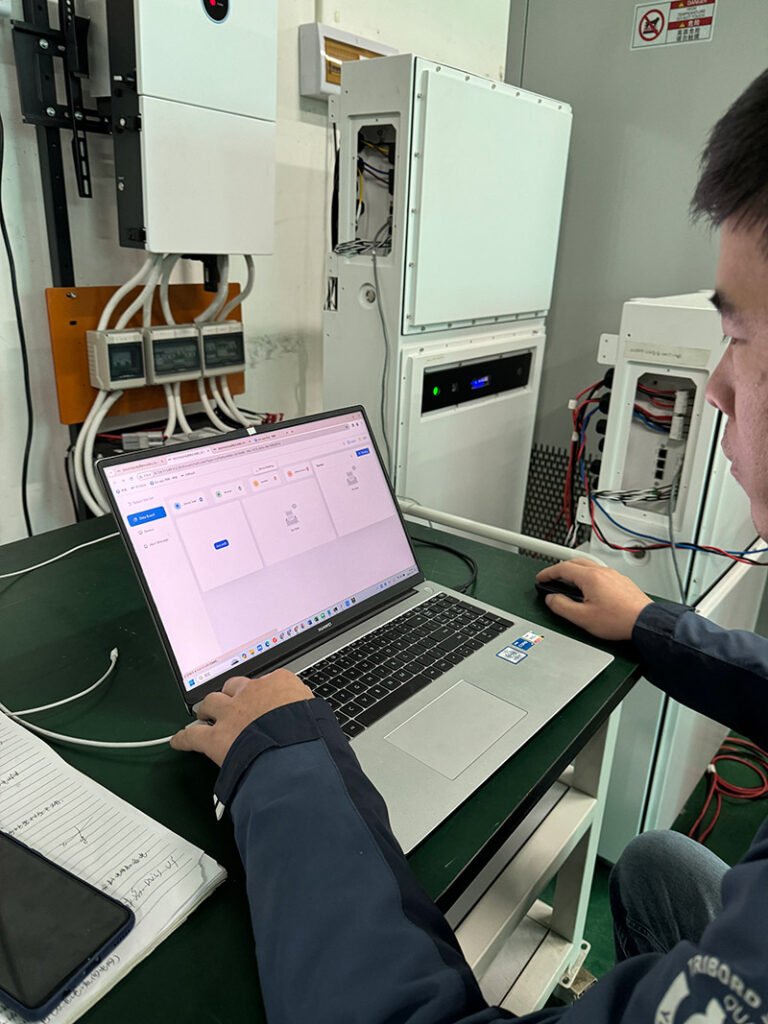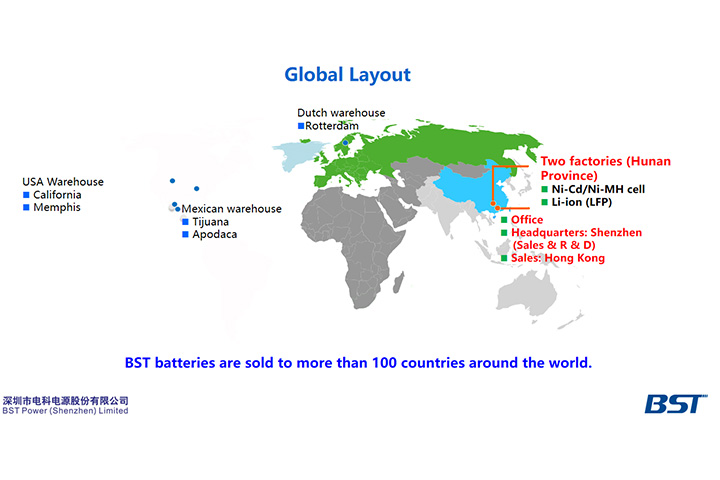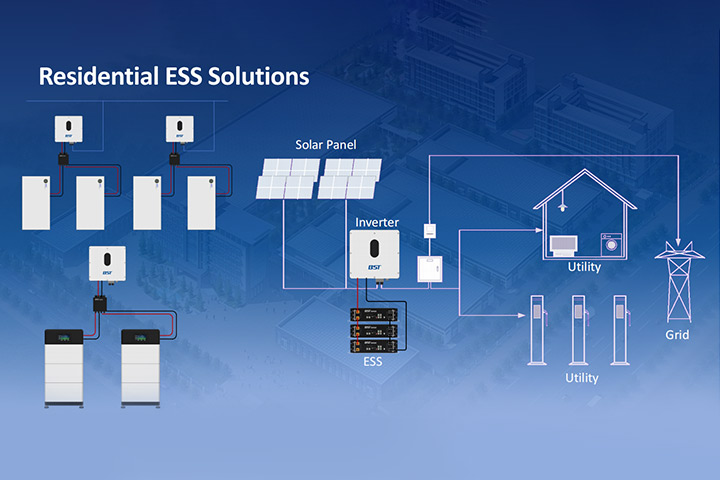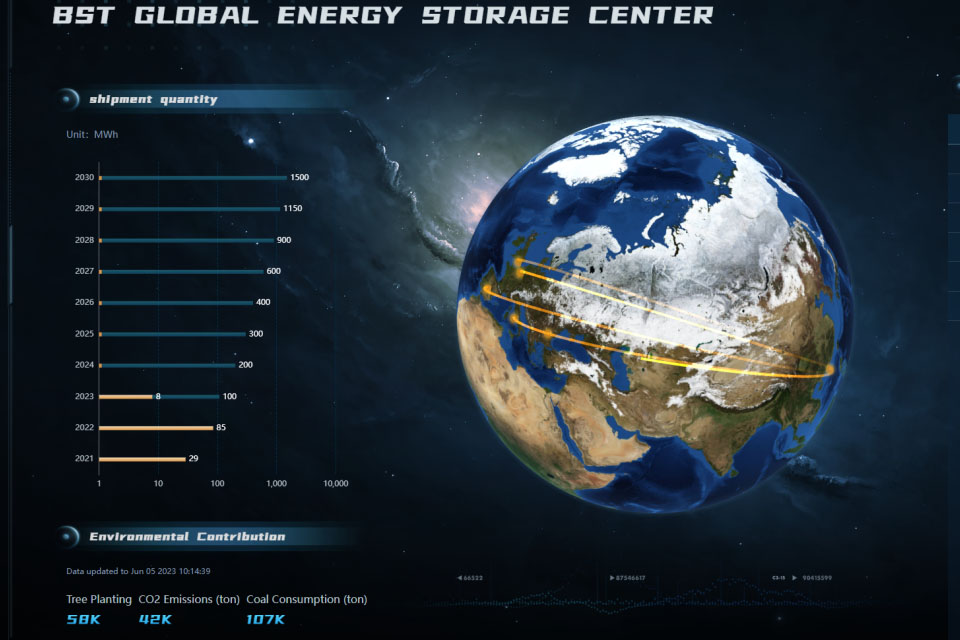Home energy storage systems are a powerful tool for reducing electricity costs and ensuring energy security. However, maintaining the batteries that power these systems is crucial. Proper maintenance helps users save money, prevent unexpected failures, and contribute to environmental sustainability. Neglecting maintenance, on the other hand, can result in reduced battery efficiency, increased repair costs, and even safety risks.
This guide provides detailed, actionable insights into how homeowners can maintain their energy storage batteries effectively. By following these practices, you can maximize battery life and ensure that your system delivers consistent performance over time.
1. Avoid Overcharging and Overdischarging
- Why It Matters: Overcharging can stress the battery, leading to chemical degradation. Overdischarging can cause permanent capacity loss. Both these issues reduce the battery’s lifespan significantly.
- Suggestions for Maintenance:
- Use Smart Systems: Install a Battery Management System (BMS) to monitor and regulate charge levels.
- Set Safe Limits: Keep the charge within 20% to 80% to prevent extremes.
- Daily Monitoring: Regularly check the system’s charge levels through a monitoring app.
Customer Perspective Analysis: Homeowners often want batteries to last as long as possible. Overcharging and overdischarging are common risks that are easy to overlook. Using a BMS provides peace of mind, automating the process and protecting the investment without constant supervision.
2. Control Battery Operating Temperature
- Why It Matters: Batteries function best in stable temperatures. High heat can cause chemical reactions that degrade components, while cold temperatures slow down chemical activity, reducing efficiency.
- Suggestions for Maintenance:
- Create a Stable Environment: Install batteries in a temperature-controlled area, such as a garage or basement.
- Use Cooling or Insulation: In hot climates, install ventilation or cooling systems. In colder areas, use battery blankets for insulation.
- Avoid Direct Sunlight: Place the system away from windows or other areas exposed to heat.
Customer Perspective Analysis: A stable environment is essential for energy savings. For example, families in hotter regions can avoid extra expenses on repairs by ensuring proper ventilation. This practice also ensures reliable energy output during extreme seasons.
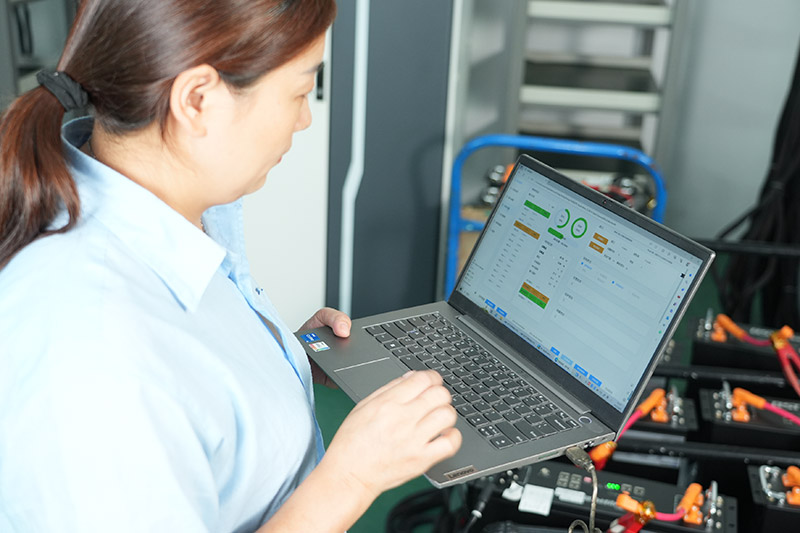
3. Check and Maintain Battery Connections Regularly
- Why It Matters: Loose or corroded connections cause energy losses, reduce performance, and can create safety hazards such as overheating.
- Suggestions for Maintenance:
- Inspect Monthly: Look for loose wires, discoloration, or corrosion.
- Clean Connections: Use a baking soda solution to clean terminals and wires. Ensure they are completely dry afterward.
- Tighten Components: Use a wrench to secure any loose connectors.
Customer Perspective Analysis: A small investment of time in monthly inspections prevents costly downtime. Regular cleaning also ensures safety, especially in homes with children or sensitive electronics.
4. Perform Regular Equalization Charging
- Why It Matters: Batteries consist of multiple cells. Over time, these cells may charge and discharge unevenly, leading to performance degradation. Equalization charging ensures all cells maintain consistent voltage.
- Suggestions for Maintenance:
- Follow Manufacturer Recommendations: Perform equalization charging every 3-6 months or as advised.
- Monitor During Equalization: Use the BMS to observe cell voltages during this process.
- Professional Assistance: Hire a technician for equalization if you’re unsure of how to perform it safely.
Customer Perspective Analysis: Balanced cells mean fewer replacements and better overall energy storage. For families relying heavily on stored energy, regular equalization ensures uninterrupted supply.
5. Avoid Prolonged Idling
- Why It Matters: Batteries self-discharge when unused, leading to inactive cells and potential damage. This is especially common with seasonal energy storage setups.
- Suggestions for Maintenance:
- Periodic Use: Charge and discharge the system at least once every 3 months, even if not in regular use.
- Plan for Seasonal Usage: Before leaving batteries unused for extended periods, ensure they are at around 50% charge.
Customer Perspective Analysis: Regular activity keeps the system healthy. For customers using storage as a backup system, maintaining periodic use ensures reliability when it’s needed most.
6. Use Suitable Inverter and Charging Equipment
- Why It Matters: Incompatible equipment can lead to excessive current or overheating, causing stress on the battery.
- Suggestions for Maintenance:
- Choose Certified Products: Ensure inverters and chargers are compatible with the battery type and model.
- Avoid Overloading: Do not use equipment that exceeds the battery’s rated capacity.
Customer Perspective Analysis: Matching the correct equipment ensures safety and extends battery life. Investing in certified inverters may seem expensive upfront, but it prevents costly replacements down the road.
7. Monitor Battery Performance Regularly
- Why It Matters: Gradual performance degradation may not be obvious without monitoring. Early detection of issues can prevent expensive repairs or replacements.
- Suggestions for Maintenance:
- Install Monitoring Software: Track metrics like voltage, temperature, and cycles.
- Schedule Professional Inspections: Have a technician perform detailed diagnostics annually.
Customer Perspective Analysis: A simple app notification can alert homeowners to potential issues before they escalate. This proactive approach saves both time and money.
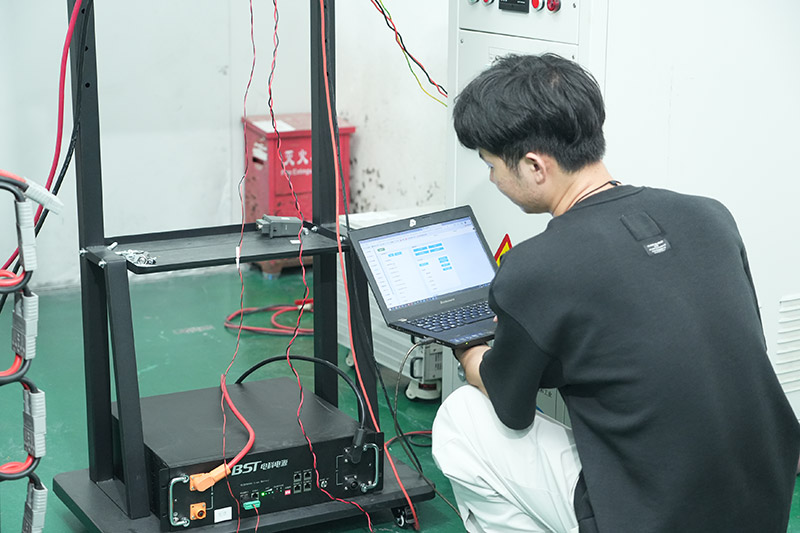
8. Clean the Battery Case and Environment
- Why It Matters: Dust and moisture can corrode battery casings, connections, and nearby components, leading to reduced performance.
- Suggestions for Maintenance:
- Wipe Down Surfaces: Use a dry cloth or mild cleaner regularly.
- Ensure Proper Ventilation: Keep the storage area clean, dry, and free from clutter.
Customer Perspective Analysis: Cleanliness is a simple, often overlooked factor that improves both safety and battery performance. Customers can easily integrate this into their regular household cleaning routine.
9. Follow Manufacturer’s Maintenance Recommendations
- Why It Matters: Every battery model has unique specifications. Failing to follow specific guidelines can void warranties or damage the product.
- Suggestions for Maintenance:
- Read the Manual Thoroughly: Understand your battery’s unique requirements.
- Stay Updated: Check for updates or recalls from the manufacturer.
Customer Perspective Analysis: Adhering to guidelines ensures optimal performance and warranty coverage. For example, customers relying on advanced lithium-ion batteries can avoid misuse by following precise charging protocols.
10. Avoid Frequent High-Current Charging and Discharging
- Why It Matters: High currents produce heat, which reduces cycle life and increases the risk of overheating.
- Suggestions for Maintenance:
- Spread Out Usage: Avoid running multiple high-power devices simultaneously.
- Use Energy-Efficient Appliances: Reduce overall load to minimize stress on the battery.
Customer Perspective Analysis: By balancing power usage, homeowners can avoid unnecessary wear on their systems. This also ensures that stored energy lasts longer during outages.
Conclusion: Why Maintenance Matters
Maintaining your home energy storage battery is a small effort that yields significant rewards. It ensures longer system life, reduces unexpected costs, and enhances reliability. Proper care also supports sustainability by reducing waste and improving energy efficiency.
For homeowners, consistent battery maintenance is not just an option; it’s a necessity. By implementing the tips outlined here, you can enjoy the full benefits of your energy storage system while contributing to a greener future. Always prioritize regular checks, follow manufacturer guidelines, and invest in compatible equipment to make the most of your investment.
